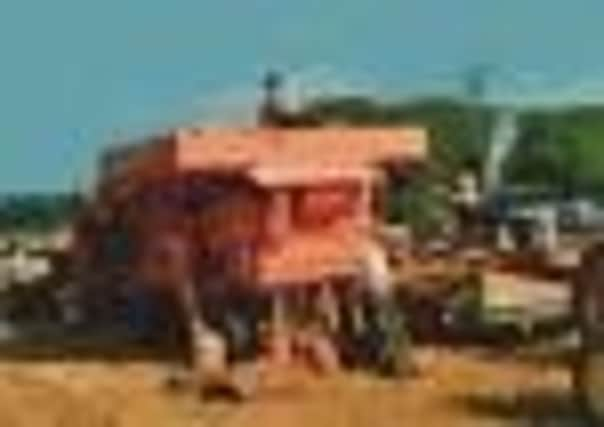Wrens were like corks on a string


Bob Bambridge, the driver, always grinned wonderfully like a chimney sweep through the grim and black with his row of fine white teeth.
Sometimes he would allow one of us into the cockpit to try a turn at the wheel, which he had to revolve at high speed to get his charge to change direction.
Advertisement
Hide AdAdvertisement
Hide AdHis old Burrell traction engine hauled a vast threshing machine which was painted pink, and had four iron wheels, and a network of bets and pulleys, shakers and riddles, sieves and chutes that would come to life when connected up into a droning monster that dissected grain from straw, and sent the dust and chaff billowing in sullen clouds across the stockyard,
It was said that a boy had once fallen into the machine at the top where the sheaves were loaded and been cut into small pieces and thrown out like a hundred squashed mice.
Not hard to imagine, for mice and even the occasional rat did go through the drum, hiding as the sheave was dropped into the mouth.
Sussex farmers sometimes built their corn stacks on steddles to stop the mice from coming aboard this lovely cosy citadel where they could eat and breed like lemmings through the winter. But Norfolk farmers had never heard of steddles and built their corn stacks on faggots of thorns.
Advertisement
Hide AdAdvertisement
Hide AdSo hundreds of mice and rats lived like Romans until their empire collapsed around them. This could be as late as February.
Stoats and weasels enjoyed the banquets in their own way, dining on flesh within the labyrinth of tunnels and chambers. And there were others which enjoyed the comforts of animal hotels.
I particularly remember the numbers of wrens which lived in corn stacks. At dusk they would thread themselves into the warm, safe stacks like corks on a string, as if tied together.
I saw about forty of these tiny birds in one stack, but the record number was observed by Dr E A Ellis of Surlingham, who saw 52.
It was the only way they could survive secure frosts.
Advertisement
Hide AdAdvertisement
Hide AdThese secure havens are no longer available to them, but straw bale stacks would be just as good with perhaps the added advantage that rats and mice would not be so attracted because of the lack of grain inside.